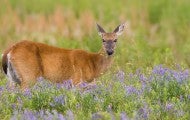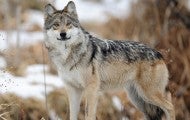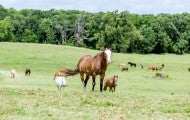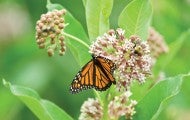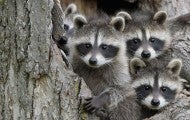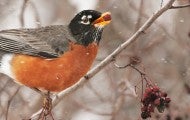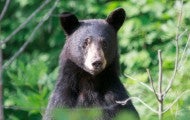One of the Humane Stewardship Alliance’s newest members is the 264-acre Taft Gardens & Nature Preserve in Ojai, California. A bit northwest of LA and Lake Casitas, Ojai is nestled in the foothills of the beautiful Topatopa Mountains. This hidden gem includes both exotic gardens and extensive natural...
WASHINGTON - The Humane Society of the United States released today the results of a disturbing undercover investigation into two wildlife killing contests in Frederick County and in Waldorf, Maryland. Investigators documented the judging portions of the events, with participants lining up rows of...
WASHINGTON—Today the Humane Society of the United States and Humane Society International released a disturbing undercover investigation revealing the potentially deceptive sale of products made from elephant ivory by sellers at 20 stores in Florida. The investigation, which took place in February...
WASHINGTON (March 29, 2024) — Today, the U.S. Fish and Wildlife Service announced a final rule governing import permits for live African elephants and elephant hunting trophies. This action effectively bans elephant hunting trophy imports from certain countries that serve as major destinations for...
In a quiet corner of Black Beauty Ranch, on a stone plinth beneath a maple tree, there’s an oval etching of a man and a burro. The man is Cleveland Amory, author and founder of the Fund for Animals, and the burro is Friendly, one of the first animals to call the sanctuary home. The two met in 1980...
The suspect creeping up near my front fence was a tough character—broad-leafed and thick-stemmed and threatening to invade my property and swallow it whole if I didn’t act fast. There was no hesitation that summer morning as I headed to work: Off with his head! It was a decision made all too easy by...
As monarch butterflies and hummingbirds headed south this fall, I dreamt of following my favorite snowbirds to Mexico and Central America. But I stayed home instead, where I have a window onto the spectacular world of winter wildlife: northern flickers tossing maple leaves with their beaks in search...
As black bear numbers increase in some North American communities and more people move into bear habitat, encounters between bears and people have risen. Whether you live in bear country or are just visiting, you can take simple steps to avoid conflicts. Learn More About Bears (Please note that this...
It started in 2002: The bears around Durango, Colorado, came down from the hills to feast on the city’s garbage. Normally, natural food—nuts and berries and acorns—keeps them in the woods, but a series of droughts and late freezes in 2002, 2007, 2012 and 2017 left them hungry. Despite their fear of...
